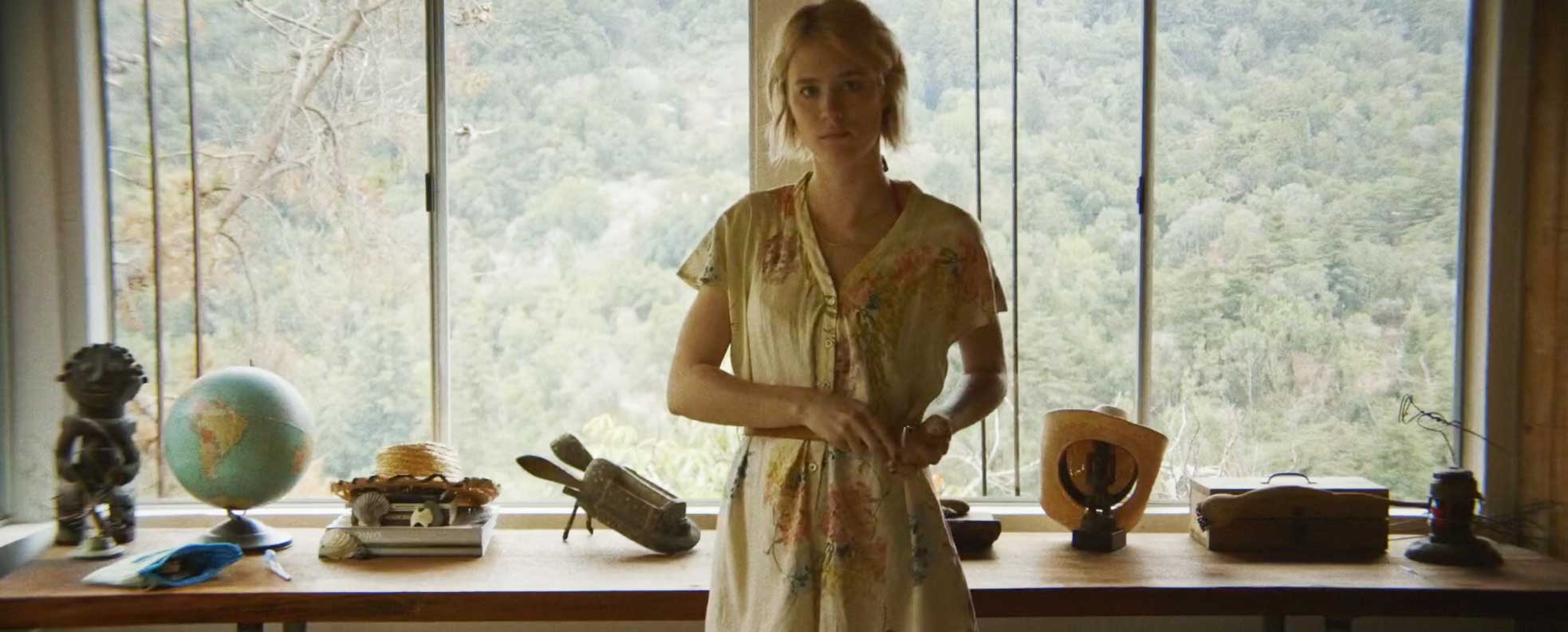Stream of Consciousness is semi-regular series that highlights underseen gems that are available to watch now from online streaming services.
Tanner recommends ALWAYS SHINE, a lean psychological thriller streaming now in the US from Shudder.
Sophia Takal’s Always Shine is an intimate, well-performed, quietly experimental melodrama about a long-standing friendship tested by that most insidious and familiar professional jealousy: desperate appeals to the affection of the Hollywood camera. The American film industry has canonized the consumption of its own to the point that its gnarlier rivalries have become thrill-ride attractions. Whatever Happened to Baby Jane gave us just one of our most beloved pairs of frenemies in Joan Crawford and Bette Davis, now memorialized in a ridiculous television series from Ryan Murphy. The most famous of these stories fascinate us in the sort of way celebrity feuds always fascinate us: the rich and famous, so detached from whatever comprises shared understandings of “real life,” are still as vulnerable to infantile tantrums as any of us – they just whine at each other while packing handbags that cost more than our wardrobes.
Always Shine is no camp sendup of famous haters. Takal and writer Lawrence Michael Levine pointedly start their story with two women much closer in spirit to the working actors and writers we know from Sunset Boulevard, Mulholland Drive, or more relevantly to this film’s mission, Starry Eyes. Beth (Caitlin FitzGerald) and her best friend Anna (Mackenzie Davis) drive together to Big Sur for a weekend away to catch up and rekindle their friendship.
online pharmacy purchase cipro online best drugstore for you
Beth has begun to break through with new roles that will help her establish a career in mainstream film. Anna struggles with her friend’s success; she is powerfully jealous, in spite of her assurances to herself and to Beth that she is content with her career, such as it is. Their tensions escalate, and the film gradually earns its place in the horror listings.

Everything is an audition
In some ways Always Shine is the most literal of the recent horror responses to Hollywood abuse of self-image – it plays a bit like a parting of the curtain after the metaphorical terrors of Starry Eyes and The Neon Demon. No demons or vampires here; the two leads are victim only to human jealousies and their awful belief that every lived moment is performative. It begins, as the other films do, with auditions; by the end of the film we still feel as if we’re watching the auditions as no fanciful plot mechanics have gotten in the way of its “realistic” scenario, and Beth and Anna never stop acting, never stop shining. The film itself makes light of cultural insecurity about the horror genre, the idea that to be a legitimate cultural artifact a horror film can’t feature the supernatural. It’s a ludicrous notion and I appreciate the complexity of the commentary from a film that, in itself, avoids supernatural horror.
online pharmacy purchase lexapro online best drugstore for you
However, even if it makes suspension of disbelief a bit easier than its peers, Always Shine is stylistically perhaps the least accessible of these films, with hard experimental edits and deconstructive film-within-a-film imagery; I am deeply impressed with this film’s craft. The cinematography frequently isolates Beth and Anna from each other, leaving them speaking into wide open spaces, emphasizing their emotional gap – then, almost without our notice, our leads begin to exchange roles, at which point they are framed very tightly together.

Together apart
Michael Montes’ score is dissonant and abrasive, at times evocative of Bartok’s invasive plucks in Kubrick’s The Shining. Takal and Montes deploy borderline violent music during quieter passages of the film, creating deep tension between what’s on screen and what’s not. The sound-design participates in this as well, allowing the spoken words to disappear into the score, or to be otherwise abstracted such as pitched downward.
The latter is an especially peculiar choice, one that works very well during segues to fracture the film’s otherwise fairly strict linearity. Wonderful.
The film’s editorial fracturing mirrors the leads’ psyches, who are meant to deliver a familiar metaphor: opposite halves of the same character. We watch them exchange roles by sharing clothing and obvious tics, but this is far more accomplished than what you’d expect of a body-switching episode of a television fantasy. Mackenzie Davis, as Anna, portrays her character’s attempt to adopt her best friend’s physicality and social behavior – this is a remarkably nuanced performance, layering self-delusion, genuine psychosis, and despair all without abandoning believability and likeability.
The 2010s are proving a remarkable era for horror, both in cinemas and in real life.
I feel that skilled artists are rising up to portray legitimate fear and rage in response to awful social change. The day of the easy franchised horror film may be behind us, at least for a time, while we need the genre to lead the medium. If you seek brilliant and challenging films in this era, look first to horror.








